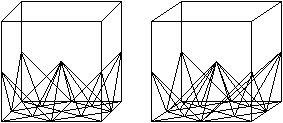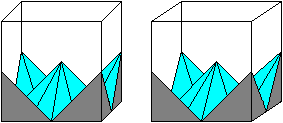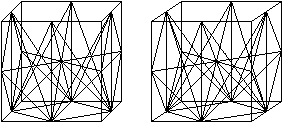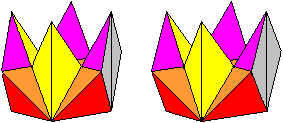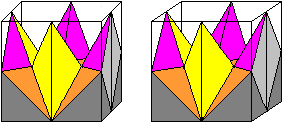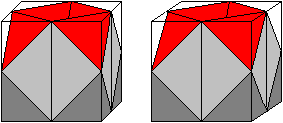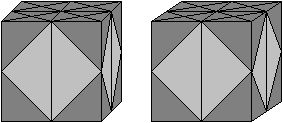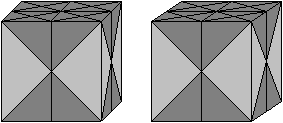What is Cube One ?
The object is to build a cube with four chains of pyramids
(kaleidocycles).
Drawings:
I use the same colours for my drawings as in the puzzle. Investigation
of the Octahedron Chain top
Formation of the pyramid red/blue There is a pyramid at the corner of the cube, if you connect the centre points of three edges. If you lay a section through the diagonals of the cube, the pyramid at the corner is halved. This solid is the pyramid of the octahedron chain. You can see the position in the following 3D-picture.
Volume The pyramid has the grey triangle as basic triangle and the height a/2. The volume V1' is (1/3)*[(1/2)(a/2)*(a/2)/2]*(a/2)=a³/96. The octahedron chain has the volume V1= 16V1' =16a³/96=a³/6. Investigation
of the Tetrahedron Chain top
Formation of the first pyramid (violet/yellow) You get a pyramid if you connect certain centres of the edges. You can see this in a 3d-picture.
Measurements of the pyramid
Volume The pyramid has the yellow triangle as basic triangle and the height sqrt(6)/4*a. The volume V21' is (1/3)*[(a/2)*(sqrt(2)/4*a]*(sqrt(2)/4*a)=a³/48. Formation of the second pyramid (red/orange) You get a pyramid if you connect certain centres of the edges. You can see this in a 3d-picture.
Measurements of the pyramid
Volume The pyramid has the red triangle as basic triangle and the height sqrt(2)/4*a. The volume V22' is (1/3)*[(a/2)*(sqrt(2)/4*a]*(sqrt(2)/4*a)=a³/48. Volume of the tetrahedron chain Eight pyramids violet/yellow and eight pyramids red/orange form the tetrahedron chain. With that the volume is V2=8*V21' + 8V22' = 8a³/48+8a³/48=a³/3. Division of the cube
Solution of Cube
One top
transparent You put this body in the transparent plastic cube, which belongs to this puzzle.
transparent
non-transparent and coloured
Third step Form a second crown from the tetrahedron chain and put it on the first one upside down.
Close the cube with a second opened octahedron.
Second solution There is a second solution as the inventor tells. This solved cube has this appearance.
You find more about kaleidocycles on my homepage: Kaleidocycles (German/English) The Shinsei Miracle (German only) Cube One on the Internet top Dieter A.W. Junker
This page is also available in German. URL of
my Homepage:
© 2006 Jürgen Köller |
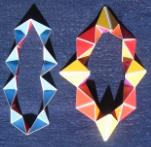
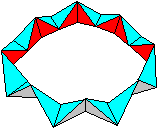
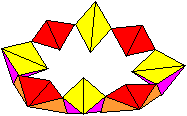
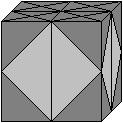

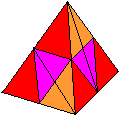
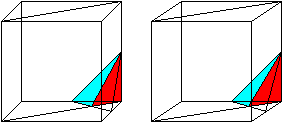
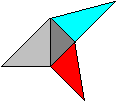
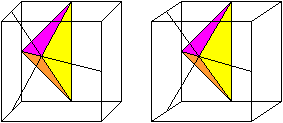
 ...
...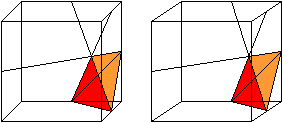
 ...
...